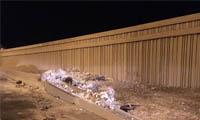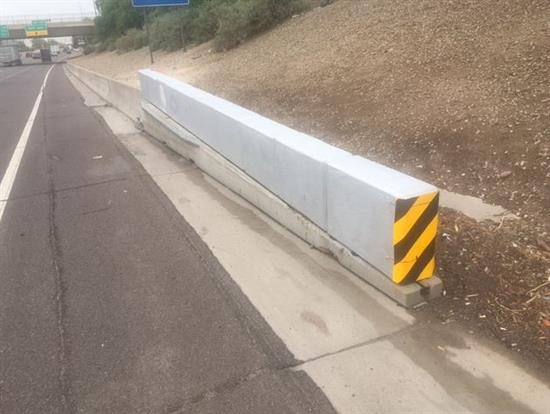Concrete crash cushions designed to reduce collision damage
Concrete crash cushions designed to reduce collision damage

By Peter Corbett / ADOT Communications
For vehicles that veer out of control and off the highway, traffic safety engineers have developed barriers designed to soften collisions with walls, poles and other immovable objects.
ADOT uses a variety of these barriers, including sand-barrel crash cushions and an accordion-like system that compresses and then snaps back into place. ADOT also uses semi-crushable concrete modules designed to gradually stop an out-of-control vehicle.
The system is known as an Advanced Dynamic Impact Extension Module. That’s a mouthful, but what’s important is that the replaceable barriers are designed to reduce the severity of crashes and injuries.
It works like this:
Each module has three layers of crushable concrete with the highest strength material at the bottom and the less-dense layers in the middle and on top.
There are generally 10 3-foot modules set side-by-side, designed to slow the out-of-control vehicle and stop it before it hits an immovable object.
“It gets messy if all 10 blocks are struck,” said Ray Baca, an ADOT maintenance superintendent. “It takes about two to three hours to clean up and install new blocks."

A recent crash on Interstate 10 in west Phoenix showed the shattered concrete debris along the edge of the highway.
The modules are used in construction zones and for permanent barriers along highways. One often sees them stacked at angles along slanted barrier walls. An advantage is that these barriers take up less space than sand-barrel crash cushions.
Plus, the barriers can be easily replaced with new modules sliding into place along a fixed metal track.

